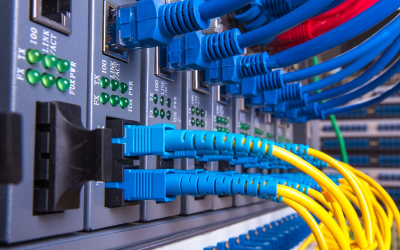System Integration: Types, Approaches, and Implementation Steps

System integration isn’t just a fancy tech term. It’s the foundation of making business operations smoother, faster, and more connected. Most companies today rely on multiple software systems. Finance, CRM, HR, logistics, and more. If these systems don’t talk to each other, the result is confusion, delays, and poor decision-making. That’s where system integration steps in.
This blog breaks it down clearly. What system integration means, the types available, how to implement it step-by-step, and why getting a professional System Integrator in Dubai is a smart move.
What Is System Integration?
It’s the process of linking different software and IT systems so that they function as one. It helps share data across platforms in real-time, improves productivity, and reduces manual effort. Think of it as building a strong digital backbone for a business.
Types of System Integration You Should Know
- Vertical Integration: Connects systems within a single department.
- Horizontal Integration: Links systems across multiple departments.
- Star Integration: Everything connects to everything—great in theory but gets messy fast.
- Common Data Format Integration: Converts all data into a single format, so systems can understand each other easily.
Proven Integration Methods That Work
- Point-to-Point: Direct links between systems. Simple but not scalable.
- Hub and Spoke: Centralised system handles all communication.
- Enterprise Service Bus (ESB): Works well in large, complex setups.
- Microservices: Each function runs independently and talks through APIs. Flexible but needs planning.
The Integration Process Step by Step
- Plan and Evaluate: Understand current systems and what needs connecting.
- Design: Choose the right integration method.
- Develop: Build connectors, APIs, and workflows.
- Test: Make sure everything runs smoothly.
- Implement: Roll out gradually to avoid disruptions.
- Maintain: Keep monitoring and updating regularly.
Why Choosing the Right System Integrator in Dubai Matters?
Integration done wrong can lead to downtime and waste. A skilled System Integrator in Dubai can customise the approach, manage technical complexity, and make sure everything works together perfectly. That’s how digital transformation becomes a reality.
Recent Posts
- Top 7 Benefits of Structured Cabling System in Dubai
- Structured Cabling in Dubai: Why Your New Office Network Is Only As Good As Its Wiring
- Enhancing Business Efficiency With IT AMC Services
- How IT Support Helps Prevent Cybersecurity Threats in UAE Companies
- Expert IT Support and Maintenance Services in Dubai







